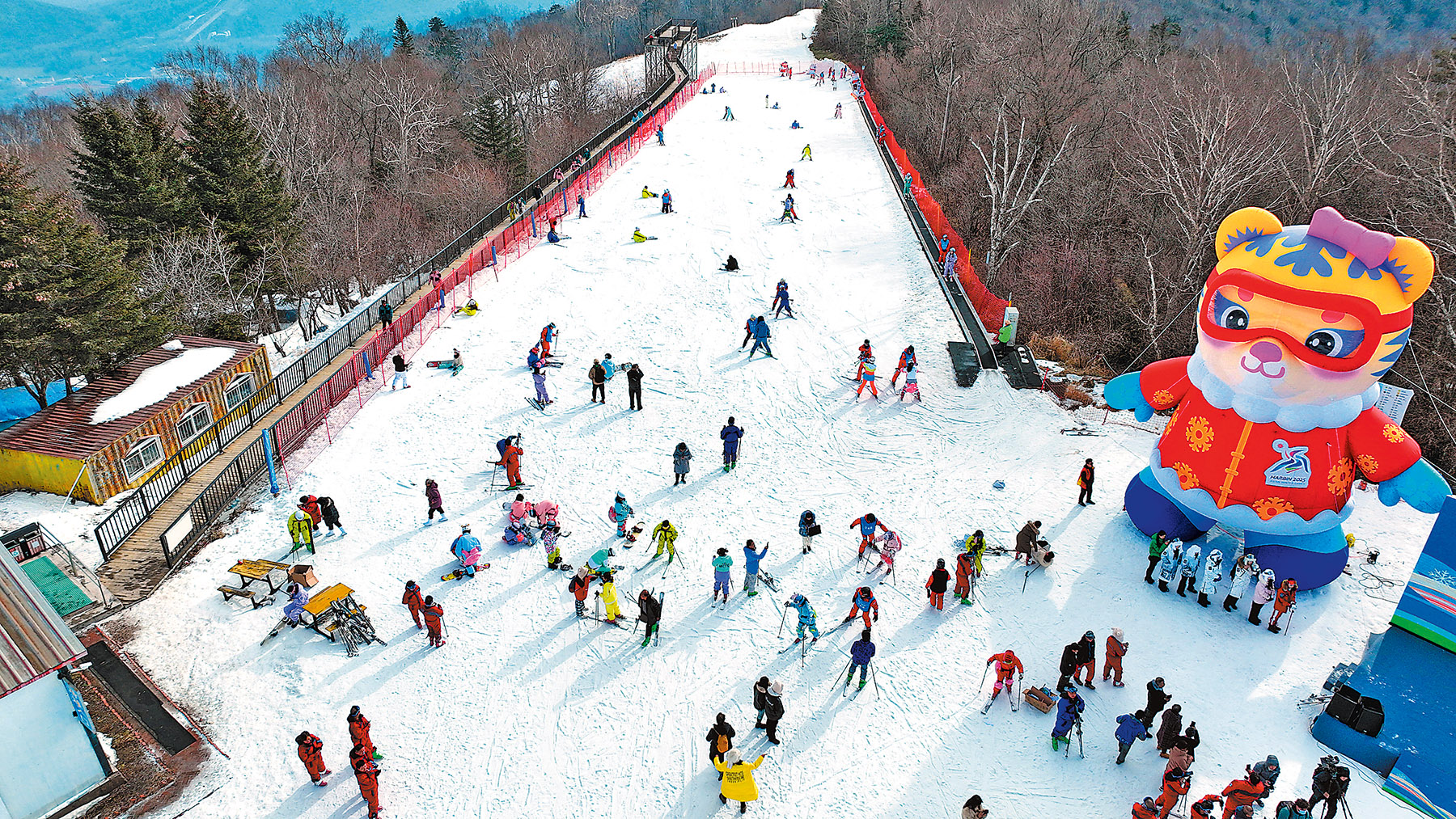
The tourism market in Northeast China, led by "ice city" Harbin, capital of Heilongjiang province, has become popular again this winter with upgraded facilities, after the city went viral online and achieved record tourism sales last year.
This winter, the Harbin Ice and Snow World theme park, which is set to open mid-December, plans to expand its area to 1 million square meters from 810,000 square meters last year. The number of ice and snow slides that are sought after by tourists will increase from 16 to 24, according to the local government.
READ MORE: China plans to boost ice & snow economy, targeting 1.5t yuan by 2030
Bookings of hotels in Harbin have jumped more than 50 percent year-on-year, and the search volume of travel products related to Harbin this month was threefold higher than last month, according to Qunar, a Beijing-based online travel agency.
Most travelers who have shown interest in visiting Harbin come from cities in southern part of the country such as Shanghai; Hangzhou, Zhejiang province; Chengdu, Sichuan province; Nanjing, Jiangsu province; and Shenzhen and Guangzhou in Guangdong province.
"Despite the fact that most ski resorts in China have not opened yet, consumers have started to get passionate about taking ice and snow trips. Tourists who come from the southern part of the country seem to have a higher enthusiasm for going skiing, and some indoor ski resorts in Guangdong have already become popular destinations," said Xiao Peng, a Qunar researcher.
The travel appeal of Harbin is also driving the popularity of neighboring cities. Hotel bookings of hotels in Yichun and Qiqihar in Heilongjiang jumped some 50 percent over last year.
In addition, bookings of flights to Yichun, Qiqihar and Mohe, China's northernmost city, have all climbed more than 40 percent on a yearly basis, Qunar found.
Earlier this month, the State Council issued a guide to stimulate the vitality of the ice and snow economy in the country and proposed 24 measures. By 2027, sales of the ice and snow economy in China are expected to reach 1.2 trillion yuan ($165.8 billion), and by 2030, the figure is forecast to hit 1.5 trillion yuan.
ALSO READ: Harbin a hot destination
The growth momentum of ice and snow tourism is expected to drive demand for transportation, accommodation, catering and other sectors, and China's investments in the sector, including building or expanding ski venues and hotels, have increased, consultancy Frost& Sullivan said.
"The main groups who are interested in going skiing in China are young, highly educated and high-income consumers from first-tier cities. Males account for about 70 percent of the total, and those who were born in the 1980s and 1990s make up about 80 percent of all age groups," said Sean Jia, partner and managing director of consultancy Frost & Sullivan China.
Besides Northeast China, the Aba Tibetan and Qiang autonomous prefecture in Sichuan province has become a hot destination for ice and snow tourism this year, thanks to the newly launched high-speed railway and magnificent glacier landscapes locally.
Wang Wei, a traveler from Beijing, said he changed his plan of traveling to Harbin and has booked a flight to Aba in late November.
"I have always wanted to experience the Dagu Glacier, the lowest and youngest glacier in the world, as well as experience the world's highest-altitude cableway in Aba. The launch of the high-speed rail from Chengdu to Aba has made it much more convenient," Wang said.


